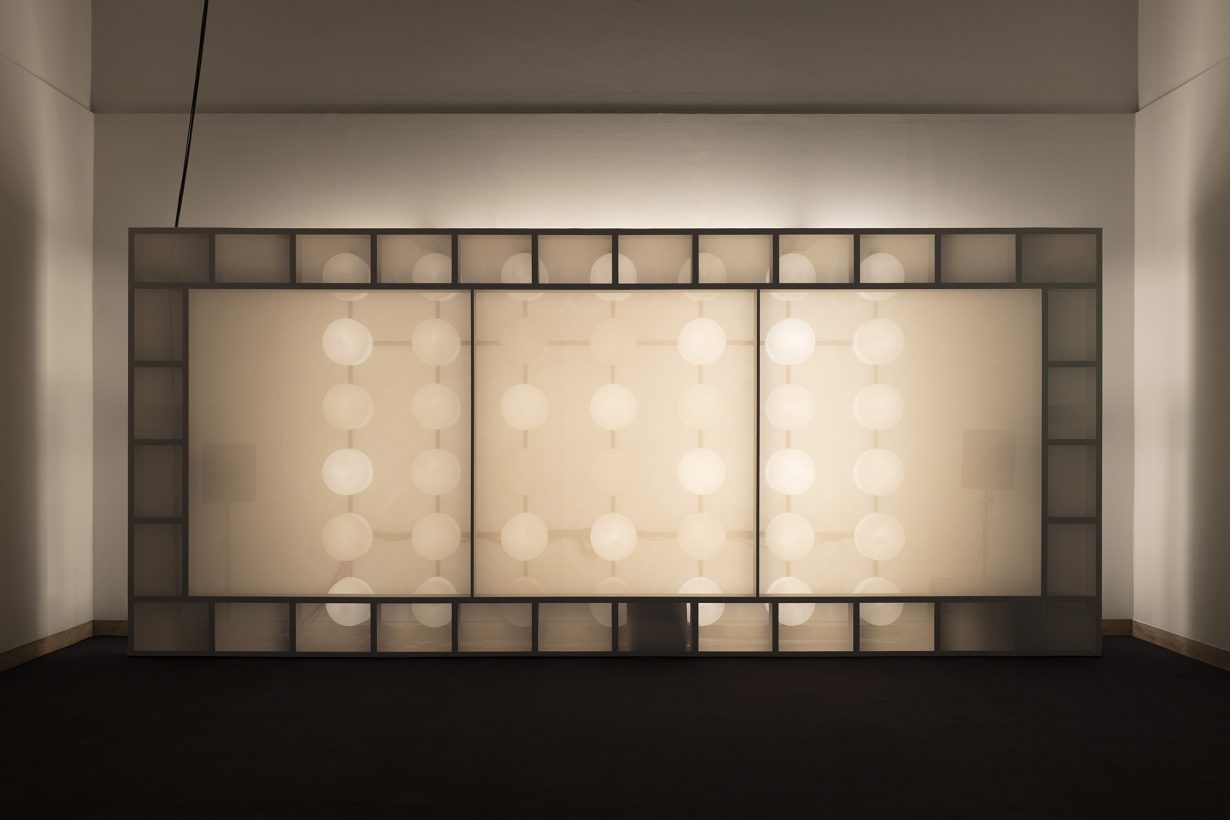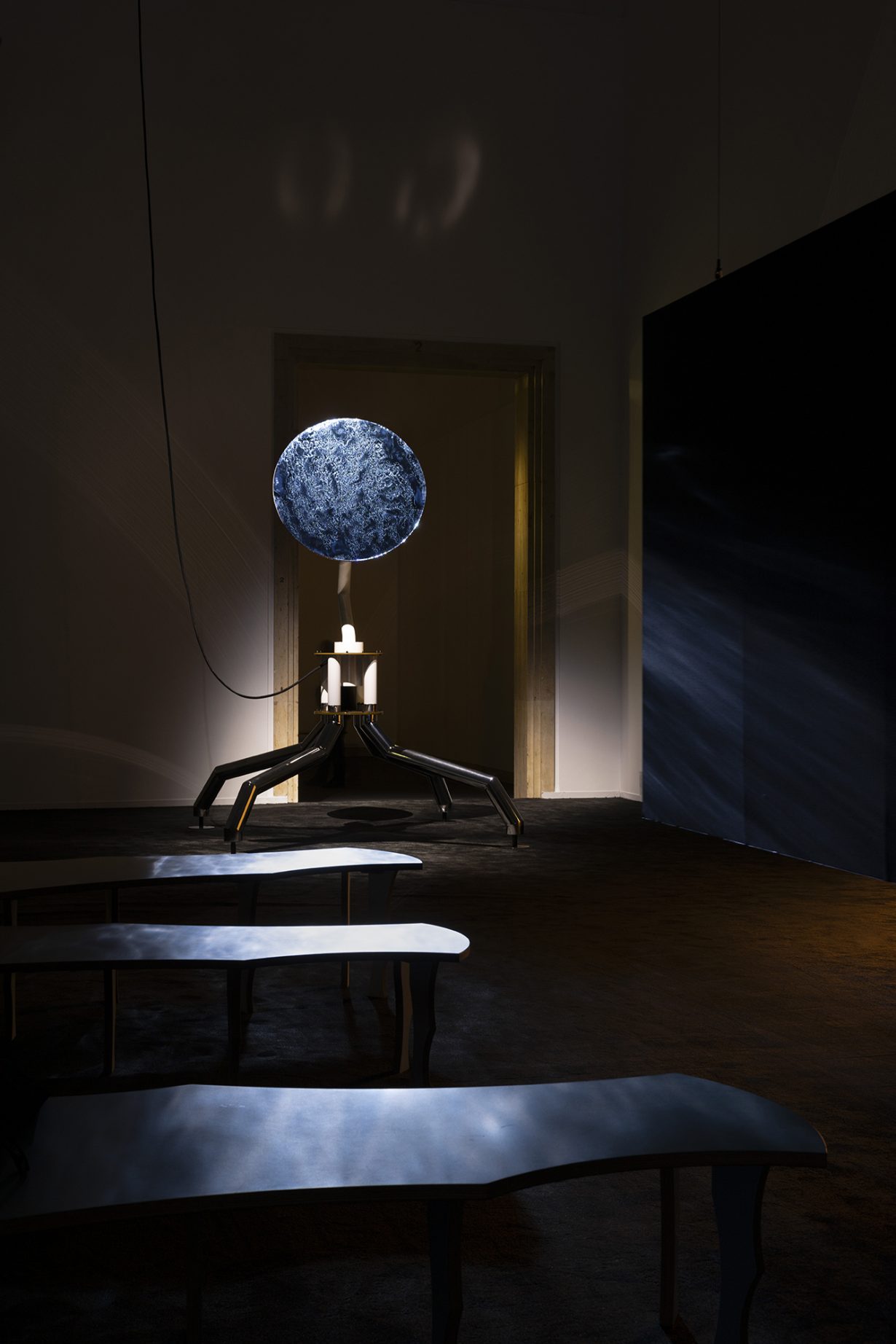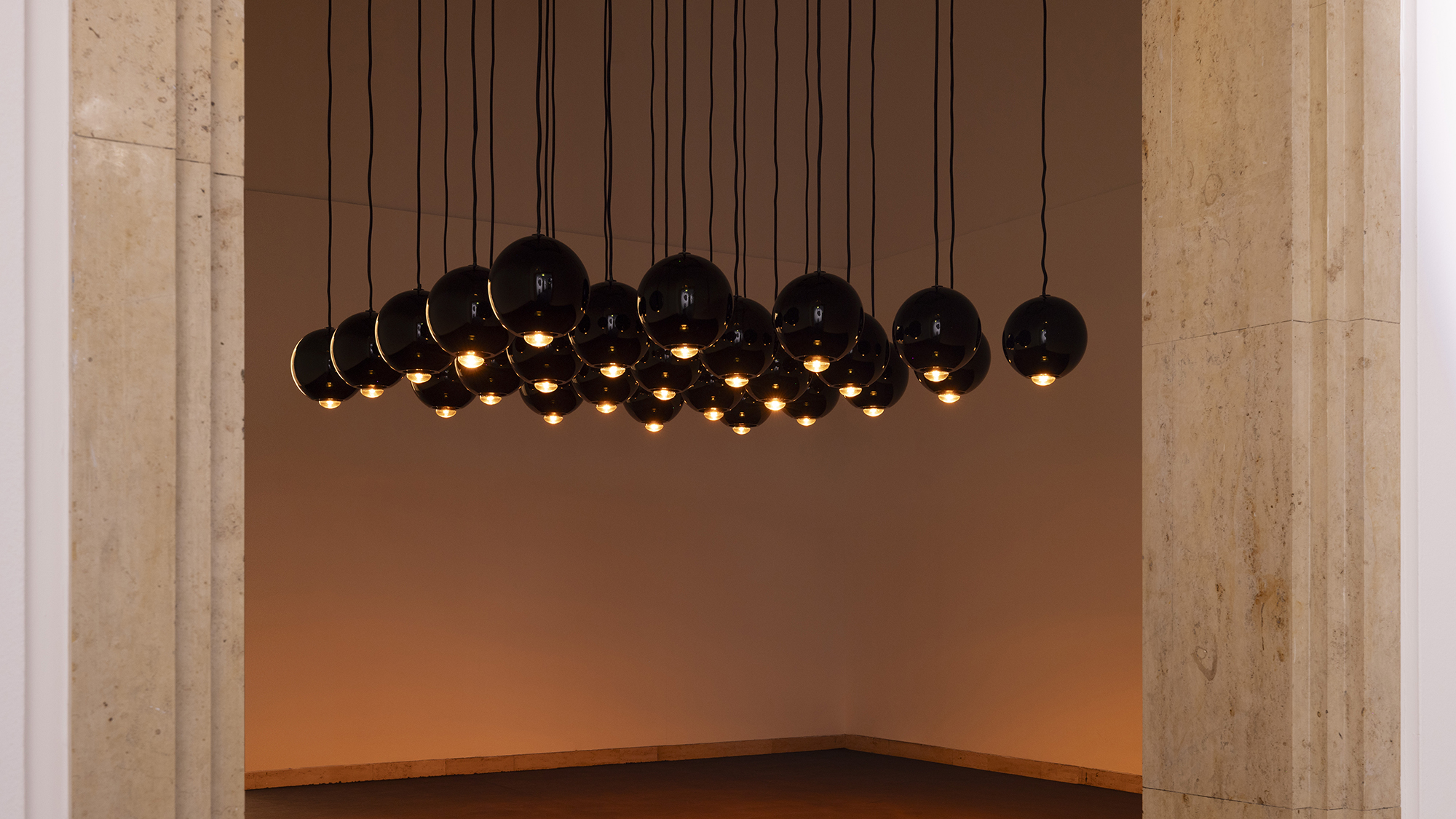In Voices at Haus der Kunst, Munich it feels like something is being transmitted in a language halfway alien, halfway familiar
Philippe Parreno’s exhibitions are often initially experienced as a destabilising encounter with otherness. So, at the risk of blowing that for anyone who hasn’t seen Voices – a version of which, to be fair, was shown earlier in 2024 at the Leeum Museum of Art in Seoul – here’s what a first wander through is like. Haus der Kunst’s huge, darkened, neoclassical main space, flanked by smaller ones on either side and at the back, is dominated by an evolving film on a screen, El Almendral (2024), an updating stream of footage from an almond grove and surrounding landscape in Almería, Spain; almond trees tolerate drought, and this region is steadily undergoing desertification due to climate change. The smaller spaces offer a stop-start scenography of Parreno’s increasingly trademark light- and sound-based sculptures, mostly new, a few dating back years. Among them are a trio of bobbly glass sculptures, shaped like giant peanut shells and containing coloured lights, that slide up and down steel poles and cast rippling, austerely psychedelic patterns on the walls; a 5 × 5 grid of blinking globular heat lamps strung from the ceiling – heat being a leitmotif of the show – and suspended, intermittently rotating speakers that softly emit an aleatory soundscape of droning, muttering and chirring. The latter is part of an overall soundscape divided across the rooms, Voices (2024), which clones and sometimes completely abstracts speech by well-known German TV presenter Susanne Daubner. In each case, here, it feels like something is being transmitted in a language halfway alien, halfway familiar.
Continuing this theme is one of two films screened in rooms either side of the entrance, Anywhen (2016–24) – an earlier version of which featured in Parreno’s 2016 Turbine Hall presentation (which was ostensibly ‘controlled’ by a yeast culture), and which features one of those cuttlefish that communicate through their chromatophores’ shifting hues. The other film, La Quinta del Sordo (2021), sweeps over the surfaces of Goya’s fearful Black Paintings (c. 1819–23).

You can’t always see these films; at intervals, the projection clicks off and the opaque screens they’re projected onto become shallow boxes containing flashing, probably epilepsy-inducing grids of creamy white lights. These changeovers, and the activities or pauses of the other sculptures, are influenced by two things: the shifting ambient temperature (which turns the heat lamps on and off), and the exhibition’s ‘Brain’, a computer near the back relaying spectral data from that Spanish landscape and translating it algorithmically into real-time decisions that conduct the show’s multipart son et lumière. This is the apparatus through which an anthropologically altered landscape ‘attempts’ to speak to us: as if to say, so Parreno suggested in a press conference, “what now, humans?”
At times, your visit may be interrupted by one of several inquisitive performers: a woman in a face-covering straggly black wig, say, asking if you have an important question on your mind. I’ve previously enjoyed getting snarled up in works by Tino Sehgal – making a guest intervention entitled [untitled][ for Philippe] (2024) here – but I was trying to see everything, and things kept switching off, so I said no (Sometimes these questioners do bendy, slo-mo dances responding to the moving sculptures; this and their gothy/witchy looks suggest Sehgal has been studying Anne Imhof.) The value of an offered conversation, though, wasn’t lost on me. Parreno’s show is a stack of volunteered empathic bridges: between humans and nature (landscape; the cephalopod who stares directly at us in Anywhen); between humans and technology that seems, at least at first, to have its own inscrutable agenda; and between humans and other humans. It’s as much about the potential frictional difficulty of those colloquies as about glimpses of their possibility.

Churls may suggest that Parreno is mostly going over familiar formal territory here. A more onboard take – mine – is that he’s partly marking time, while incrementally progressing, in an artworld that’s only just catching up with him. His art doesn’t wish away increasingly sentient technologies or a radically altered climate, but uses them towards dethroning human agency, rerouting creativity itself. The specific innovations here – ventriloquising an entire landscape; enfolding Sehgal; tugging against stiff Nazi-era architecture via tech and unfixity – plus the use of generative art to establish a baseline tenor of wrongfooting uncertainty, turn out to be plenty. I walked away thinking, not for the first time after a Parreno show, that he’s among our most farsighted and generous makers; and that anyone who thinks art is out of ambition and ingenuity should head, forthwith, to Munich.
Voices at Haus der Kunst, Munich, through 25 May
From the January & February 2025 issue of ArtReview – get your copy.
